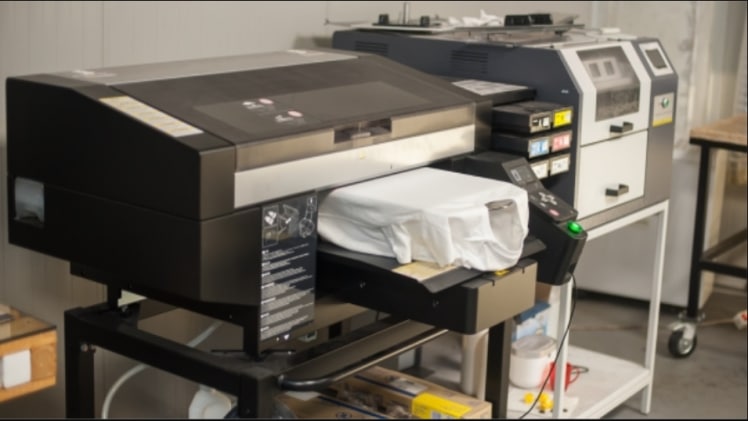Direct to Film (DTF) printing has become a game-changer for designers and businesses alike. This innovative technique allows for vibrant and detailed designs to be transferred onto a wide range of fabrics, opening doors for creative expression on everything from t-shirts and hats to bags and shoes. But how can you leverage DTF printing to its full potential? Here, we’ll delve into the advantages of DTF printing for design, explore tips for achieving high-quality prints, troubleshoot common issues, and discuss how to incorporate color management for precise design reproduction. Additionally, we’ll explore innovative applications of DTF printing to ignite your design inspiration.
Advantages of Direct to Film Printing in Design
DTF offers several unique advantages that make it ideal for creating stunning designs:
- Versatility: Unlike traditional printing methods limited by fabric type, DTF works on a vast array of materials, including cotton, polyester, blends, and even non-traditional fabrics like leather and wood. This versatility empowers designers to explore their creativity across diverse applications.
- Vibrant Colors: DTF printing utilizes pigment-based inks that produce a wider color gamut compared to traditional methods. This results in incredibly vivid and eye-catching designs that truly pop.
- Durability: DTF prints are known for their impressive washing durability. The heat-activated adhesive ensures designs stay put even after multiple washes, making them ideal for garments and other frequently used items.
- Fine Detailing: DTF printing boasts exceptional detail reproduction, allowing for intricate designs with crisp lines and small text to be printed flawlessly. This is a significant benefit for designs with complex elements.
- White Ink Capability: Unlike many printing methods, DTF utilizes white ink, enabling designs to be printed on dark-colored fabrics without compromising vibrancy. This opens up a whole new design world for dark-colored garments and accessories.
Tips for Achieving High-Quality Prints
To achieve the best results with DTF printing, consider these tips:
- Artwork Preparation: Ensure your artwork is high-resolution (300dpi or higher) and saved in a compatible format (e.g., PNG, TIFF).
- Pre-treatment: For optimal adhesion, pre-treat light-colored fabrics with a specifically formulated DTF pre-treatment solution.
- Ink Selection: Use high-quality DTF inks formulated for your specific Direct to film printers – DTF ULTRA printer. This ensures proper ink flow and optimal results.
- Curing: Proper curing is crucial. Follow your DTF printer’s recommended curing time and temperature settings to ensure the ink bonds correctly with the film.
- Heat Pressing: Utilize a heat press specifically designed for DTF transfers. Apply the recommended pressure and temperature for the desired fabric type to achieve a flawless transfer. For best results, consider using hot peel DTF transfers to ensure a smooth and easy peel after pressing.
Troubleshooting Common Issues
If you encounter issues with your DTF prints, here are some troubleshooting tips:
- Bleeding Colors: This might indicate insufficient curing. Double-check your curing time and temperature settings.
- Faded Prints: Low-quality inks or improper color profiles could be the culprit. Use high-quality DTF inks and ensure your color profiles are calibrated correctly.
- Cracking or Peeling: This might be caused by inadequate pre-treatment or improper pressure during heat pressing. Ensure you pre-treat the fabric and use the recommended pressure settings.
Incorporating Color Management Techniques for Precise Design Reproduction
Color management is essential for achieving accurate and consistent color reproduction in DTF printing. This involves:
- Calibration: Calibrate your design software, DTF printer, and any additional devices involved in the workflow to ensure consistent color representation.
- Color Profiles: Utilize ICC color profiles specifically designed for DTF printing and the type of fabric you’re using. These profiles translate colors from your design software to the printer for faithful reproduction.
By implementing proper color management techniques, you can guarantee that your designs are printed with the intended colors, ensuring a professional and visually appealing final product.
Exploring Innovative Applications of Direct to Film Printing in Design
DTF’s versatility extends beyond apparel. Here are some creative ways to utilize DTF printing in design:
- Promotional Products: Personalize tote bags, hats, and other promotional items with eye-catching designs.
- Home Decor: Add a personal touch to throw pillows, curtains, and even wall tapestries with DTF printed designs.
- Product Customization: Enhance phone cases, laptops, and other accessories with custom designs using DTF printing.
- Art and Craft Projects: Print intricate designs on canvas or fabric for unique art pieces, wall hangings, or even personalized clothing patches.
With its versatility, durability, and high-quality output, DTF printing unlocks a world of creative possibilities for designers and businesses. By following these tips and exploring innovative applications, you can leverage the full potential of DTF printing to take your designs to the next level. So why wait? Start experimenting with DTF today and see your creativity come to life!


